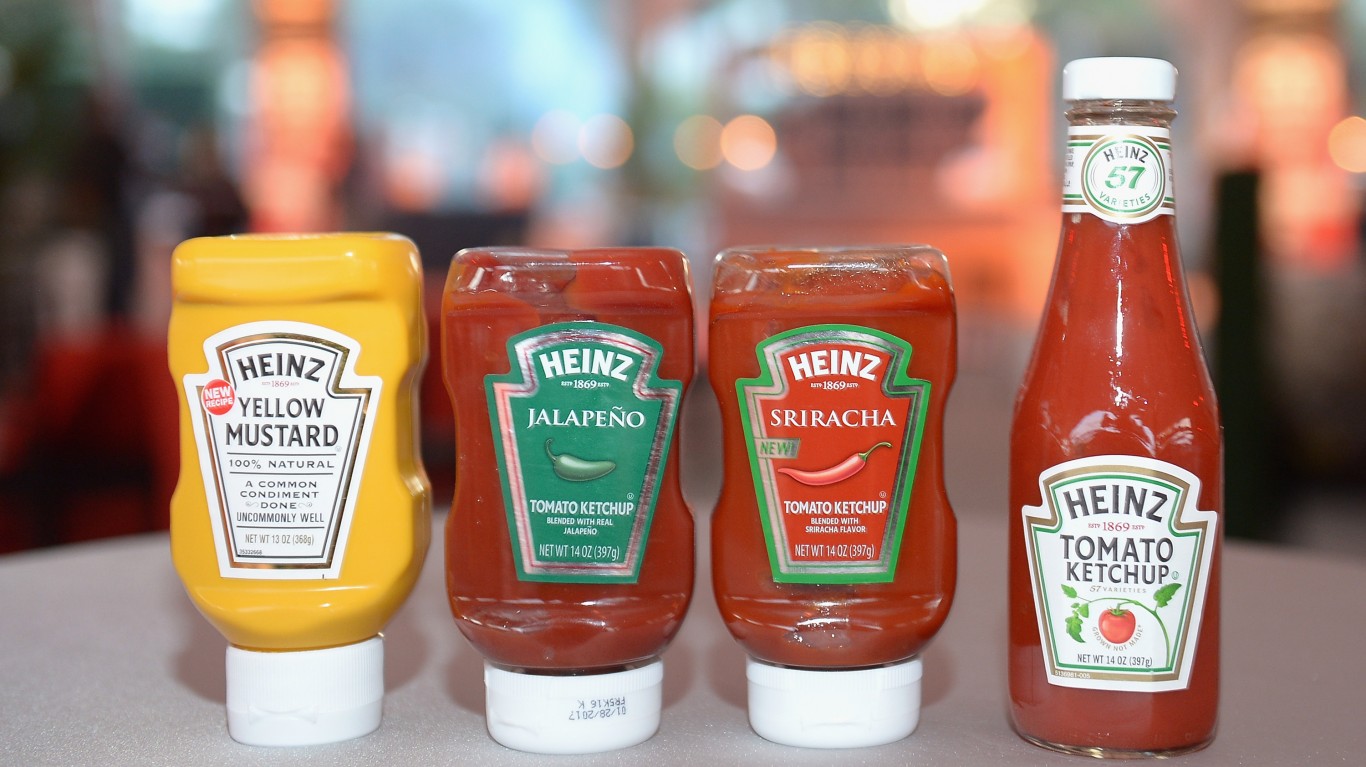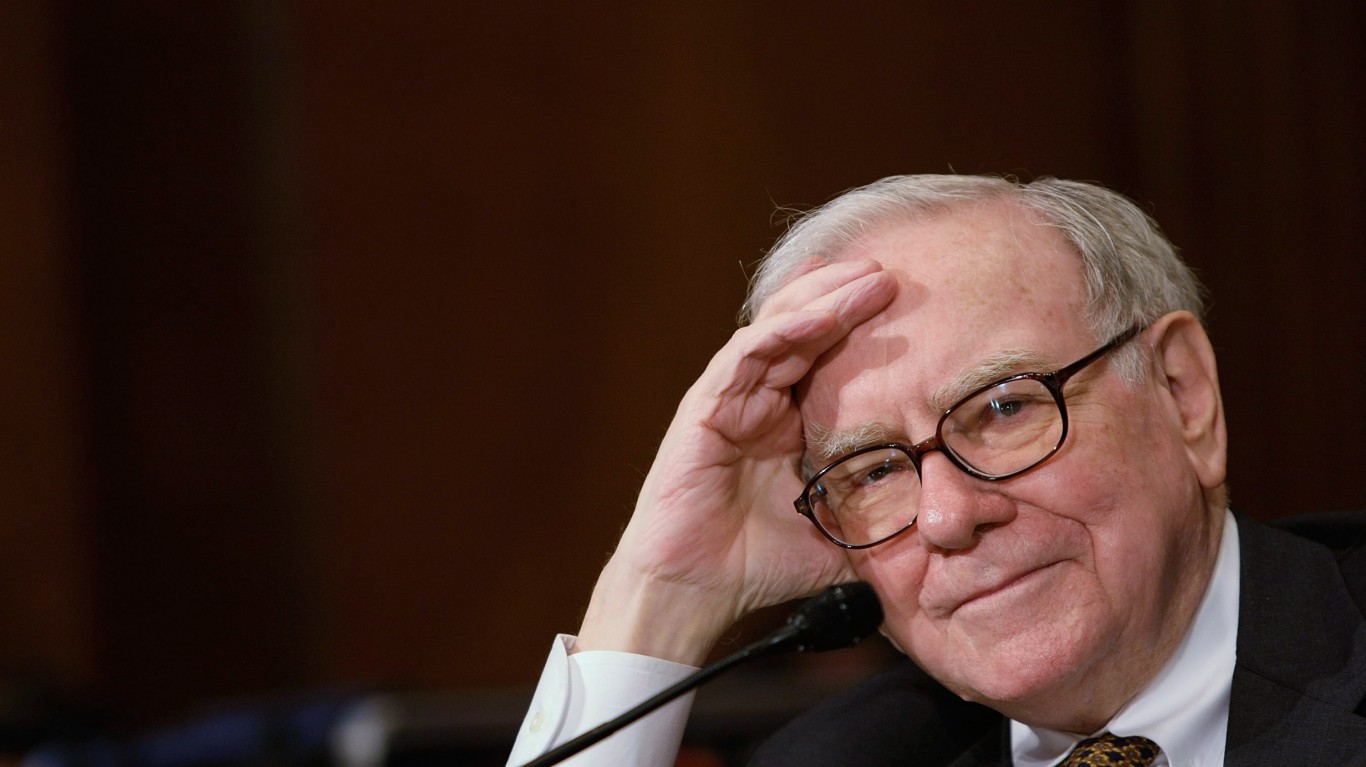
We are about halfway through this earnings season, and growth stocks have seen a couple of pretty consistent analyst moves. First, guidance trumps results. Specifically, lowered guidance outweighs results that beat expectations.
Second, analysts are lowering price targets on growth stocks while maintaining their ratings. Not too surprising given the hammering that these stocks have taken so far this year.
We already have previewed three stocks that report results before Tuesday’s opening bell: Continental Resources, Marriott International and Restaurant Brands. Moreover, we have previewed earnings for four companies reporting results Tuesday afternoon: Airbnb, Devon Energy, SolarEdge and ViacomCBS.
Here is a look at four firms scheduled to report results first thing Wednesday morning.
Barrick Gold
Over the past 12 months, the price of gold has increased by about 3.5%. Barrick Gold Corp. (NYSE: GOLD) has seen its share price decline by about 2.3% over the same period. The current geopolitical tensions have pushed gold futures near their November high, but still well off the 12-month high of around $1,900 an ounce. Since mid-December, Barrick’s stock price has risen by nearly 18%.
Combined with inflation fears, it seems that the price of gold should be higher. Is cryptocurrency really threatening the yellow metal’s safe-haven role? Hard to say, but over the past 12 months, the Coinbase bitcoin to U.S. dollar index has declined by about 11.4%.
Analysts remain bullish on Barrick stock, with 20 of 25 brokerages giving the shares a Buy or Strong Buy rating while the rest have a Hold rating. At a recent price of around $20.80 a share, the upside potential based on a median price target of $26 is about 25%. At the high price target of $30, the upside potential is 44.2%.
Fourth-quarter revenue is forecast at $3.2 billion, which would be up 12.1% sequentially but down about 2.4% year over year. Adjusted earnings per share (EPS) are forecast at $0.30, up 23.6% sequentially and down 14.3% year over year. For the full 2021 fiscal year, estimates call for EPS of $1.11, down 3.4%, on sales of $11.91 billion, down 5.4%.
Barrick stock trades at 18.8 times expected 2021 earnings, 19.7 times estimated 2022 earnings of $1.56 and 8.2 times estimated 2023 earnings of $1.15 per share. The stock’s 52-week range is $17.27 to $25.37. Barrick pays an annual dividend of $0.36 (yield of 3.74%). Total shareholder return for the past year was negative 2.2%.
Kraft Heinz
Kraft Heinz Co. (NASDAQ: KHC) has added just 1% to its share price over the past 12 months. But share price growth is not what keeps Warren Buffett and Berkshire Hathaway as the company’s biggest shareholder with more than 26% of the outstanding shares. It is the rich dividend that produced more than $1 billion in revenue for Buffett/Berkshire in the past 12 months. Buffett is unlikely to give up much of his position, even if the company has to pare its dividend to pay its rising costs.

Analysts are slightly optimistic on Kraft Heinz stock, with 14 of 20 giving the stock a Hold rating and four rating the shares a Buy or Strong Buy. At a share price of around $34.30, the upside potential to the median price target of $40 is about 16.6%. At the high price target of $50, the upside potential is 45.8%.
Kraft Heinz is expected to post fourth-quarter revenue of $6.63 billion, up 4.9% sequentially and down 4.5% year over year. Adjusted EPS are forecast at $0.63, down 2.9% sequentially, and down 21.3% year over year. For full fiscal 2021, analysts are looking for EPS of $2.77, down 3.7% year over year, on revenue of $25.94 billion, down by less than 1%.
The company’s stock trades at 12.4 times expected 2021 EPS, 13.2 times estimated 2022 earnings of $2.61 and 12.9 times estimated 2023 earnings of $2.67 per share. The stock’s 52-week range is $32.78 to $44.95. Kraft Heinz pays an annual dividend of $1.60 (yield of 4.66%). Total shareholder return for the past 12 months was 1.1%.
Shopify
E-commerce platform provider Shopify Inc. (NYSE: SHOP) has posted a share price decline of around 41% over the past year. After touching low in mid-May, shares traded up more than 60%. Since that peak, however, the stock is down more than 49%. Headwinds include rising costs and those ever-present supply chain issues. Both share the blame for a drop in free cash flow from $230 million in the first quarter of last year to $30.5 million in the third quarter. That number has to come back up and analysts will be watching it closely.
Of 44 brokerages covering the stock, 25 rate Shopify a Buy or Strong Buy and 18 have a Hold rating on the stock. At a share price of around $858, the upside potential based on a median price target of $1,450 is 69%. At the high price target of $3,300, the upside potential is nearly 285%.
Analysts are expecting fourth-quarter revenue to come in at $1.34 billion, up 19.5% sequentially and about 37% higher year over year. Adjusted EPS are forecast at $1.31, up by 62.2% year over year but down by 17% year over year. For full fiscal 2021, EPS is forecast to reach $6.34, up 59.3%, with revenue up 56.3% to $4.58 billion.
Shopify trades at 135.5 times expected 2021 earnings, 129 times estimated 2022 earnings of $6.66 and 92.9 times estimated 2023 earnings of $9.30 per share. The stock’s 52-week range is $780.00 to $1,762.92. Shopify does not pay a dividend. Total shareholder return last year was negative 40.8%.
Want to Retire Early? Start Here (Sponsor)
Want retirement to come a few years earlier than you’d planned? Or are you ready to retire now, but want an extra set of eyes on your finances?
Now you can speak with up to 3 financial experts in your area for FREE. By simply clicking here you can begin to match with financial professionals who can help you build your plan to retire early. And the best part? The first conversation with them is free.
Click here to match with up to 3 financial pros who would be excited to help you make financial decisions.
Have questions about retirement or personal finance? Email us at [email protected]!
By emailing your questions to 24/7 Wall St., you agree to have them published anonymously on a673b.bigscoots-temp.com.
By submitting your story, you understand and agree that we may use your story, or versions of it, in all media and platforms, including via third parties.
Thank you for reading! Have some feedback for us?
Contact the 24/7 Wall St. editorial team.



